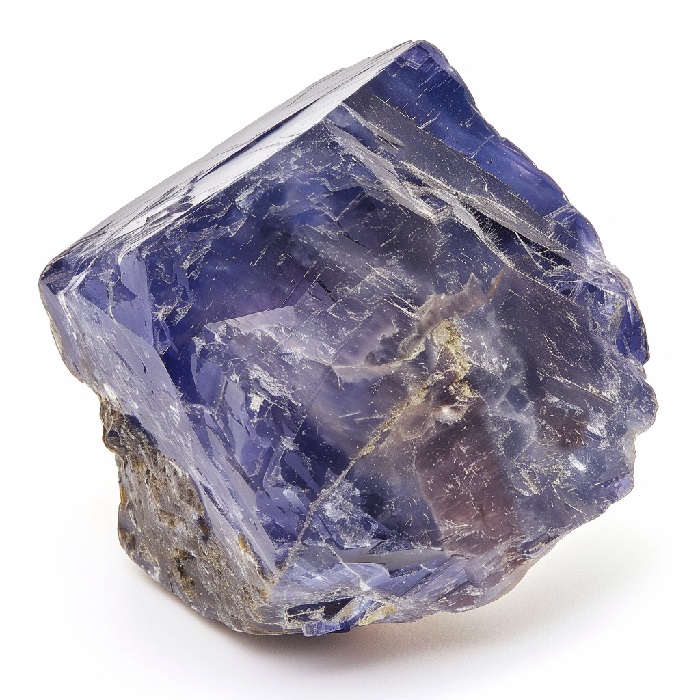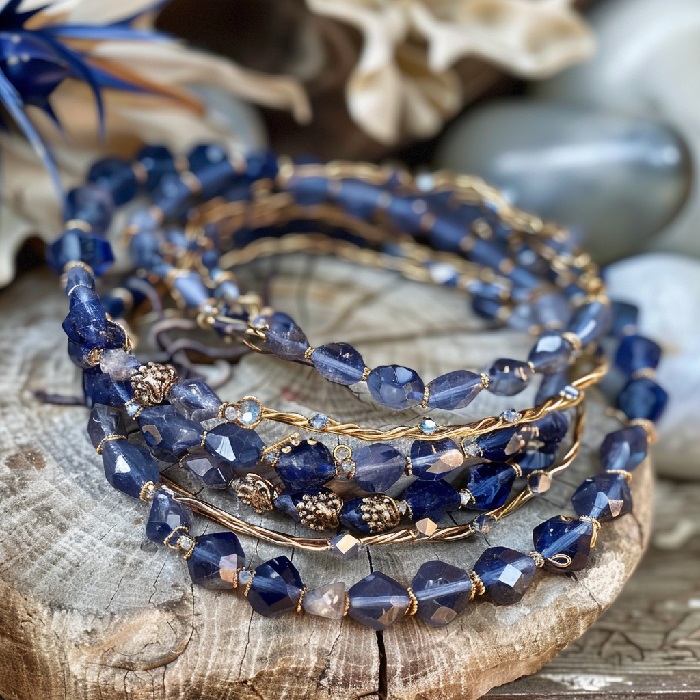Iolite Mining
DESCRIPTION:
Iolite, often called the gem of the Vikings, belongs to the precious stone family. Legend has it that Viking explorers used weapons made of iolite gems to determine their position on the open sea. By using iolite as a lens, they could pinpoint the exact position of the sun, ensuring safe navigation to their destination. This gemstone's remarkable property of exhibiting different colors when viewed from different angles is known as pleochroism, making it highly prized by the Vikings. It might appear violet from one angle, clear as water from another, and honey yellow from a third angle. If the stone is not cut correctly, its color may not be clearly visible.
This unique ability to display varying colors sets iolite apart from other precious stones. It is often mistaken for sapphire or tanzanite, though iolite is softer than sapphire and harder than tanzanite. While its predominant colors are blue and violet, it can also be found in yellow, grey, blue, and brown hues. Due to its capability of exhibiting three different colors from different angles, it is referred to as trichroic.
Iolite is sourced from various parts of the world, with major deposits found in India, and also in Australia, Brazil, Canada, Myanmar, and Madagascar. Believed to bring happiness and facilitate problem-solving, this gentle gemstone helps wearers understand their purpose in life. Wearing iolite provides a sense of protection, calmness, and comfort, enhances brain function, and is even said to aid weight loss by reducing body fat.
Exquisite jewelry pieces made from iolite include earrings and necklaces. These beautiful lilac stones are associated with the third eye chakra, bringing positive effects when in contact with the wearer's aura. Within this spectrum, violet and indigo stones hold significant spiritual importance. The blue variety is often referred to as the dream crystal, while the indigo stone is seen as the stone of judgment.
Interestingly, iolite is not widely marketed and remains lesser-known to average consumers. Concerns about its availability persist despite its widespread presence in many countries. Its value in the gem trade remains relatively low compared to other stones.
To preserve its beauty, iolite jewelry should be handled carefully to avoid damage from hard impacts or scratches by other gemstones. Cleaning should avoid high steamers to protect this precious crystal. Despite its current status, iolite's popularity is gradually rising, securing a notable place in the world of jewelry.
MINING AND PROCESSING:
The extraction of iolite involves a series of steps from mining to processing to ensure the extraction of high-quality gem material. The process can vary depending on the specific geological conditions of the deposit:
Exploration and Mining
Geologists and prospectors identify potential iolite-bearing areas based on geological indicators. Once a suitable deposit is located, mining operations commence. This may include open-pit mining, underground mining, or alluvial mining, depending on the characteristics of the deposit.
Extraction
Once the ore is extracted from the ground, it is transported to a processing facility. Here, the ore undergoes sorting to separate the iolite-bearing material from the waste rock.
Sorting and Grading
The extracted material is sorted based on quality and size. Pieces of gem-quality iolite are selected for further processing, while lower-grade material may be utilized for industrial applications.
Cutting and Polishing
Gem-quality iolite undergoes cutting and shaping by skilled craftsmen to achieve various gemstone cuts, enhancing its beauty and pleochroic properties while minimizing wastage.
Quality Control
Following cutting, iolite gemstones undergo rigorous quality control measures to ensure they meet standards for color, clarity, and cut.
Market Distribution
Once cut and polished, iolite gemstones are distributed to jewelry manufacturers, wholesalers, and retailers who incorporate them into jewelry pieces for the consumer market.
It is essential to recognize that mining and extraction practices can differ significantly depending on the location, and there is a growing emphasis on ethical and environmentally responsible practices within the gemstone industry. Sustainable mining aims to minimize environmental impact and promote fair labor practices throughout the supply chain.
TREATMENTS AND ENHANCEMENTS:
Iolite, like many other gemstones, can undergo treatments and enhancements to enhance its appearance or market appeal. Some of the common treatments and enhancements for iolite include:
Heat Treatment
Heat treatment is frequently used on iolite to improve its color by reducing or removing brownish or yellowish tones. This process can enhance the gemstone's pleochroic properties, shifting its color towards a more desirable violet-blue hue.
Surface Coating
Surface coatings may be applied to iolite temporarily to enhance its color or optical properties. However, these coatings can wear off over time, potentially affecting the stone's appearance and durability.
Dyeing
Dyeing involves introducing color-enhancing agents into fractures or pores in the stone to improve its color. This treatment is generally considered unstable and may cause the color to fade or change over time.
Lattice Diffusion
Although not commonly applied to iolite, lattice diffusion involves introducing elements into the gem's crystal structure to alter its color. This treatment is more commonly used with other gemstones.
Oil or Resin Infusion
Oil or resin may be infused into iolite to improve its clarity by filling surface-reaching fractures. While this treatment can enhance transparency, it may not be permanent.
These treatments and enhancements can significantly alter the appearance and properties of iolite, and their use should be disclosed to ensure transparency in the gemstone market.
PHYSICAL PROPERTIES:
|
Name |
Iolite |
|
Is a Variety of |
Cordierite |
|
Heat Sensitivity |
No |
|
Special Care Instructions |
None |
|
Formula |
(Mg,Fe2) Al4Si5O18 |
|
Colors |
Blue, slightly violet blue, gray, near colorless |
|
Fracture |
Conchoidal to uneven |
|
Hardness |
7-7.5 |
|
Cleavage |
Distinct 1 direction |
|
Wearability |
Very Good |
|
Crystallography |
Orthorhombic |
|
Refractive Index |
1.522-1.578 |
|
Birefringence |
0.005-0.018 |
|
Dispersion |
0.017 |
|
Luminescence |
None |
|
Luminescence Present |
No |
|
Absorption Spectrum |
Iron spectrum. Weak bands at 6451, 5930, 5850, 5350, 4920, 4560, 4360, and 4260. Spectrum observed varies with direction of crystal. |
|
Pleochroism |
Intense and distinctive. Fe-rich crystals: a = colorless; γ = violet. Mg-rich crystals: pale yellow to green/pale blue/violet, violet-blue. |
|
Optics |
Biaxial (+). May be (-). |
|
Optic Sign |
Biaxial +, Biaxial - |
|
Luster |
Vitreous |
|
Specific Gravity |
2.53-2.78 |
|
Enhancements |
None |
|
Transparency |
Translucent to transparent |
|
Phenomena |
Chatoyancy, asterism (very rare). |

















